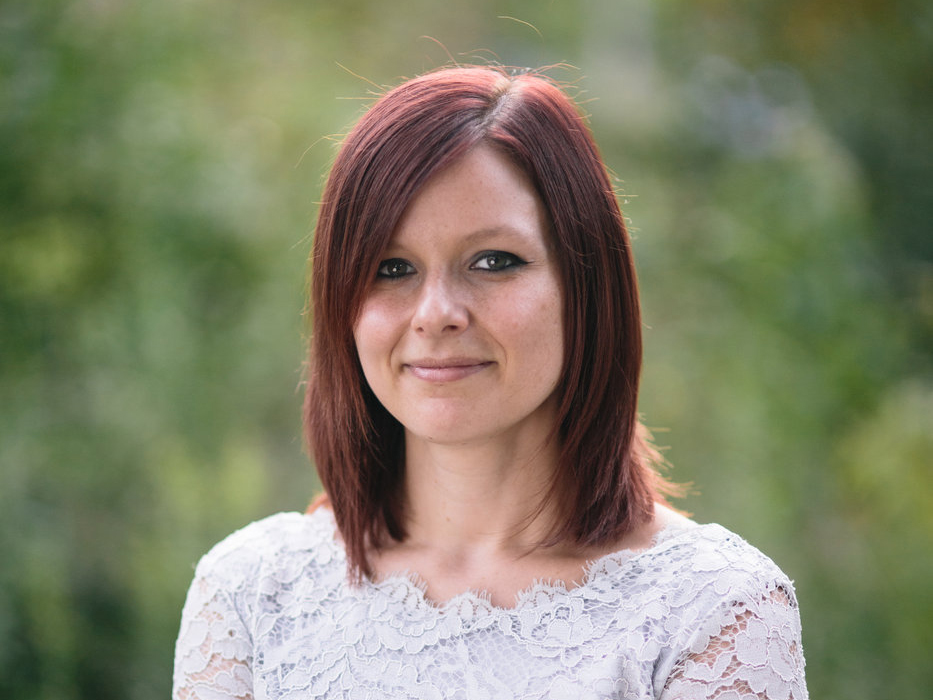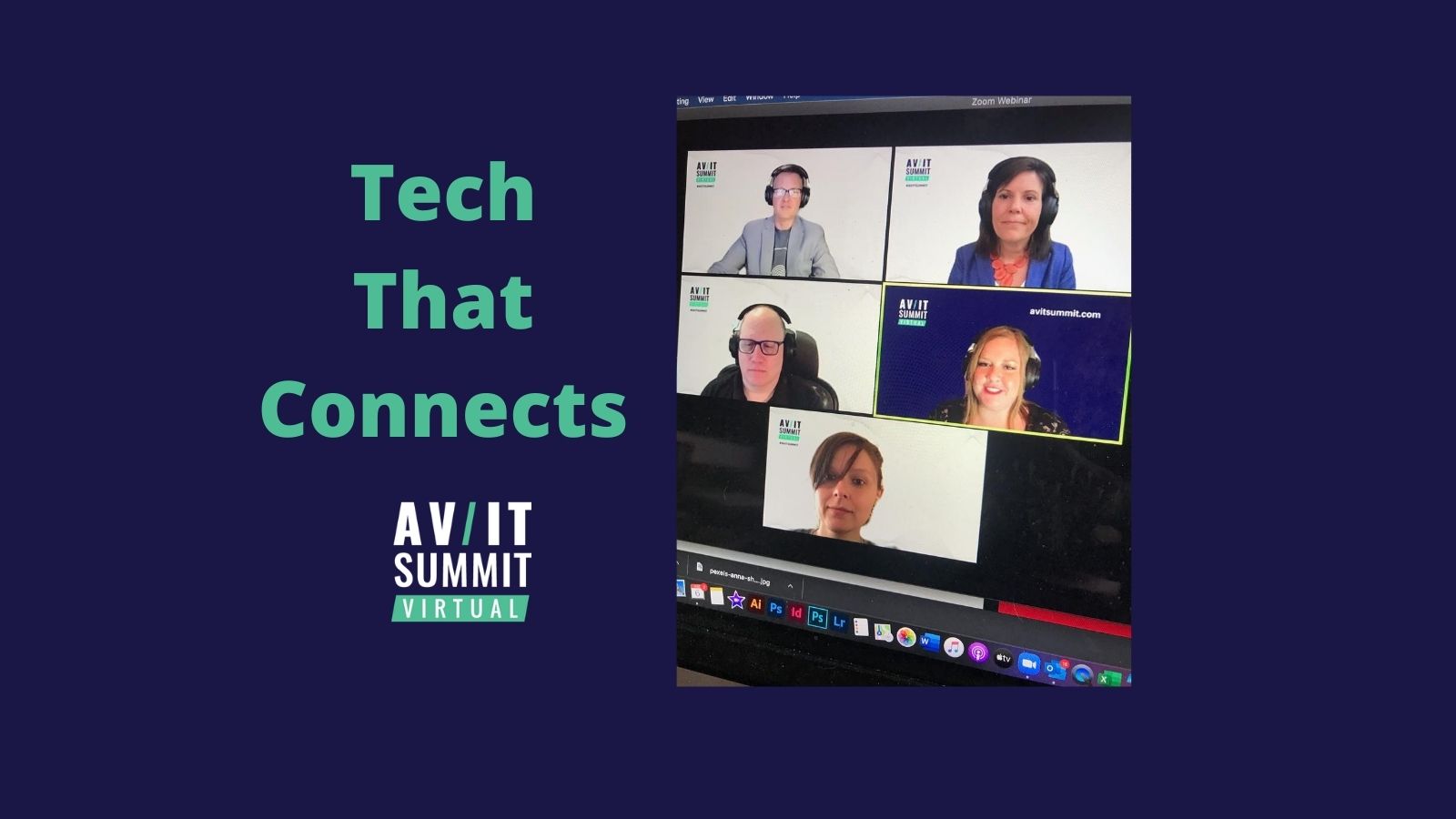The AV/IT Summit took place virtually for the first time this year, providing an experiential challenge for the show’s organizers, which include the editors at Systems Contractor News, AV Technology, and our parent company, Future.
Our aim for this online summit was to at least replicate and at best improve on the engagement and community that have drawn attendees to in-person events for decades.
This COVID-19 pandemic has forced a change—not only in the pro AV industry, of course, but in all industries around the world—and it’s really only recently that we’ve begun to figure out what factors are most important in delivering successful events and experiences.
Though we may not be able to meet in person, we can still meet, and knowing what factors are most significant in a positive experience can help us all get the most out of it.
An afternoon panel discussion at the AV/IT Summit went into more detail on the subject of technology-mediated experiences. “Tech That Connects” brought together four subject matter experts—Bradford Benn, CTS, Anna Crider, Jeff Day, and Megan Sciarini Smith—who discussed experiential techniques AV professionals can employ to amplify a sense of community.
Editor's Note: All of the 2020 AV/IT Summit content—including the exhibit hall—is available on demand for the next month. To learn more, visit avitsummit.com.

Telling Stories
Meg Sciarini Smith, who’s an AV systems engineer at a Silicon Valley tech company, set up the discussion by describing how she uses technology to bring people closer together. She notes that the solution is not always found in the brightest, shiniest tech, even if that’s what the client thinks he wants. What’s important is finding the best technology to tell the story. “Because at the heart of it, audiovisual is about communication and assisting the message. To me, it’s finding whether that’s a media server with some fancy image tracking, or if it’s just a microphone and a spotlight. It matters about that human experience—that the message you’re trying to convey makes it to its audience and does it in a really good way, like a really awesome experience.”
She continued, “I feel like there is a responsibility on technologists’ plates, if you will, to say, okay, yes, I’m here to give you what you want, but is that more important than your messaging?” Her job, as she sees it, is to balance the competing desires, “articulating to your client or to your customer or to whoever the ramifications of that technology and why something else might facilitate the message better. When it comes down to using the right technology, you find that’s what creates the most magical moments, where you create that suspension of disbelief and your customer gets transported. You’re no longer in a lobby waiting for your next meeting. You’re in a space that makes you feel at ease. You’re in a space that makes you feel something visceral. That’s huge. But you don’t need an LED VR studio to do that. You just need the right messaging, the right content.”

Bradford Benn finds the same challenge in his work, at “a major theme park and media company,” where he is “designing the next generation of fun.” The experiences he creates are on a very large scale, and people must travel to the theme park to experience them in a group. “But we still have the basic challenge, as a theme park, of expressing the stories and not using technology for technology’s sake ... and not getting in the way of that experience,” he said. “The ultimate thing is, we want to immerse you in the experience and not let you think of the outside world, and give you an experience you can only get there.”
The best experiences may be facilitated by technology, but it’s the story that’s the star at Benn’s theme park. “No one goes to a Broadway show and says, ‘I want to have a chandelier that falls from the sky. And I need someone to go through a trap door, and I need this, I need that,’ but that seems to be what [some] people do with experiences. You always start with the script and the story. The way my company runs it is I’m the subject matter expert on audio, video, and projection. They give me a copy of the script—and there are scripts for theme parks of what they’re trying to do, what the experience is, all of that—and I choose what technology is best.”

Anna Crider is a principal at Entro and president of the Society for Experiential Graphic Design (SEGD). She explained that integrators should think of SEGD as a resource, not competition. “SEGD is a mix of every specialty, because it’s really about collaboration. And so for us, for myself, I will never say that I could come in and do some digital installation without experts like all of you on this panel. We’re the ones who are thinking about the overall experience. We’re thinking about how someone’s experiencing it, but then we’re teaming with fabricators or integrators or whomever we need in order to actually help us take this small pebble of an idea and really bring it to reality. Across the SEGD, we really thrive on that collaboration and all these different perspectives in the room to go beyond what our personal skillsets are.”
That thought process applies to her work at Entro, a company that provides design services in branding, wayfinding, signage, environmental design, and media architecture. “Everyone will say, ‘I want one of those apps that does the blue dot thing, you know.’” While that may be the right technology for the project, it may not. “It’s starting with the brief and understanding what the problem is that we’re solving. And then just developing that,” Crider said. “So it’s experiences. It’s really thinking about what is that experience that we’re creating for people, whether it be retail, a city, a hospital, anything.”

Jeff Day, the founder of North of 10 Advisors, a member of the AVIXA board directors, and “an AVIXer for life,” described the process of deciding when technology needs to play a role in an experience. He noted, “In the brand activation world, there are three pillars to what I refer to as the ‘connected brand experience,’ and that has to do with the entertainment aspect: being entertaining, being connected, and being a community. One of the things I think is really important is the community aspect of all of it. What drives people is the desire to be connected to people. And when tech can be used to help amplify a community, it has a really powerful effect.”
You Gotta Be In It to Win It
Megan A. Dutta, content director at Systems Contractor News and moderator of this discussion, asked the panelists about the word “experience”—why is that word still important and do we need to continue to use it?
Sciarini Smith answered, “I’ve based my career on trying to make people really feel like they are someplace else than an auditorium with some lights and some music coming in. In the entertainment industry specifically, your bread and butter is making people feel something. It is the experience.... What matters is that the person or persons sitting in the space, whatever that space is, walk out of it and either don’t know and don’t care what the technology was because it was just that seamless, or were totally transported out of their daily lives and for a couple of minutes got to feel something exciting and great and were like, ‘Wow, that was cool.’”
“And also, it’s what we remember,” added Crider. “I mean, regardless of when we go somewhere, or we’re in a virtual situation like this [the AV/IT Summit], it’s the technology, it’s the experience, it’s the way we feel when we’re in that environment that we remember, more so than whatever we were there to do. I would say it’s such a critical word [experience] because we all can impact the way people feel and remember and experience an environment.”

This panel and all the others that took place during the AV/IT Summit are available online. Visit avitsummit.vfairs.com and log in to watch recorded discussions.
While you're there, don't forget to visit the exhibit hall to see what technologies our sponsors have on display.
The AV/IT Summit Virtual Exhibition will be live until Sept. 7.
Day noted, “I like to think of the word ‘experience’ as both a noun and a verb, and it will always be relevant in both contexts. A noun in the sense that we observe something and we experience something like what Meg described, and a verb in terms of the sense that to experience something is much more of an active and an interactive thing.... The word ‘experience’ will never be irrelevant. It should always be attached to its outcome, whatever the outcome is.”
“The experience for my company [a theme park] starts at the parking lot,” Benn added. “If you’re having trouble parking and it takes a long time and you don’t know where to go because there’s no signage, you can’t remember where you parked and all that—you’re already stressed before you get into the park, or before you get into the movie or the building or the theater, wherever you’re going. That’s already started to change your experience.”
Experiences are multidimensional, complex events with many potential points of failure or success. And every interaction is potentially an experience: not only visiting a theme park but even buying a product online constitutes an experience. Benn noted, “How hard is it to set something up? How long does it take to repair it? All those other things that people forget are part of an experience actually are part of it. It starts at the very beginning. Is it easy to buy a ticket for the movie theater? Is it easy to park? Is it all these other things? Because that attention to detail is part of what you experience.”
The Humanity of Experience
Dutta brought current events into the discussion, asking the panelists how the COVID-19 pandemic is affecting our experiences, “particularly right now, when we’re not really having live events, everything’s virtual, people aren’t really getting together.”
“The virtualized everything is just not getting it done. There are aspects of it that are great, but it just will never be enough, you know,” Day lamented. “When I’m talking to major brands or I’m talking to people in the event world, I hear them describe three things: It’s got to be live, it’s got to be virtual, and it’s got to be digital. And I think we’ve compartmentalized these three things pretty well up to now. But now we’re saying, ‘No, we’re going to go all virtual.’ It’ll never be all virtual, and it’ll never be all digital, and it’ll never be all live. Great brands are connecting the experience. They’re saying, ‘We’re going to think about all three of these and we’re going to deliver against it.’ To me, that’s the coolest part about this. They’ve all been great [individually], but now they have to be interwoven to be successful.”
Watch another panel from the 2020 AV/IT Summit: "The Future of Pro AV" with Martin Bodley of Bose, Clint Hoffman of Kramer, Vanessa Jensen of Shure, Rich Ventura of Sony Electronics and Jason Vossler of Dell Technologies.
“Yeah, I agree. And in some ways, I think, from an experience standpoint, what has happened to us in this kind of forced new world is that it’s been a shakeup,” said Crider. “We had all been cramming into one place. Everything had been quite rigid. And in some ways it’s actually opened up to, maybe experiences can be a little bit more tailored, have more of an individual, one-on-one aspect. Maybe there can be room to breathe rather than cramming us all in one space. Maybe there’s actually some flexibility now in terms of events, where they are online, plus in person. We have more of a say now, as participants, to be able to demand a level of humanity. So that’s my hope, that humanity is brought into everyday experiences, whether that be walking down a city street or attending an event. It can be on your terms a little bit more than it ever has been.”
Sciarini Smith agreed, noting that “when it starts with the human aspect, that’s when technology is its most successful.”
“This is the beginning of having to look at things as digital, live, and virtual. People will see the opportunity that exists to connect them. It’ll never be enough to do it just one way. Forever more, we get to look at things through three lenses,” said Day. “I think major brands are going to adapt their strategies to do that because I don’t think they are happy with 100 percent virtual. They still want to touch consumers. I’m using major brands as a backdrop, but I think the same is true of industry associations and other groups. We will crave live, virtual, and digital. We’re going to crave it all. Meg described some great immersive—we crave it and we’re going to expect it in corporate just like we do in theme. There’ll be no difference. We want it in both places, and we want it at home.”
“I think virtual and physical are going to start blurring more and more. It’s just a matter of course—not just for events, but for everything,” noted Benn.

Lori Bajorek, president of the National eSports Association, gave the keynote address at the 2020 AV/IT Summit on Aug. 6. A video of her presentation is available online.
Sciarini Smith summed up our experience of the COVID-19 pandemic well, borrowing from Charles Dickens: It is the best of times, it is the worst of times. She explained, “It’s the worst of times because it’s terrible what the world is going through right now, but it is amazing the ingenuity and the innovation that we are seeing and how fast it’s moving. That’s exciting.”
Crider reinforced the idea. “You pick up on a great point that this is our moment, in a way. The world has to change. It’s our moment as experience designers to help push things forward, and make it move quickly because it has to,” she said. “I think it’s really exciting that we can impact someone’s safety, their perception of safety. We can impact the experiences that we all have. It’s a really exciting time for us as a profession."
All of the 2020 AV/IT Summit content—including the exhibit hall—is available on demand for the next month. To learn more, visit avitsummit.com.
